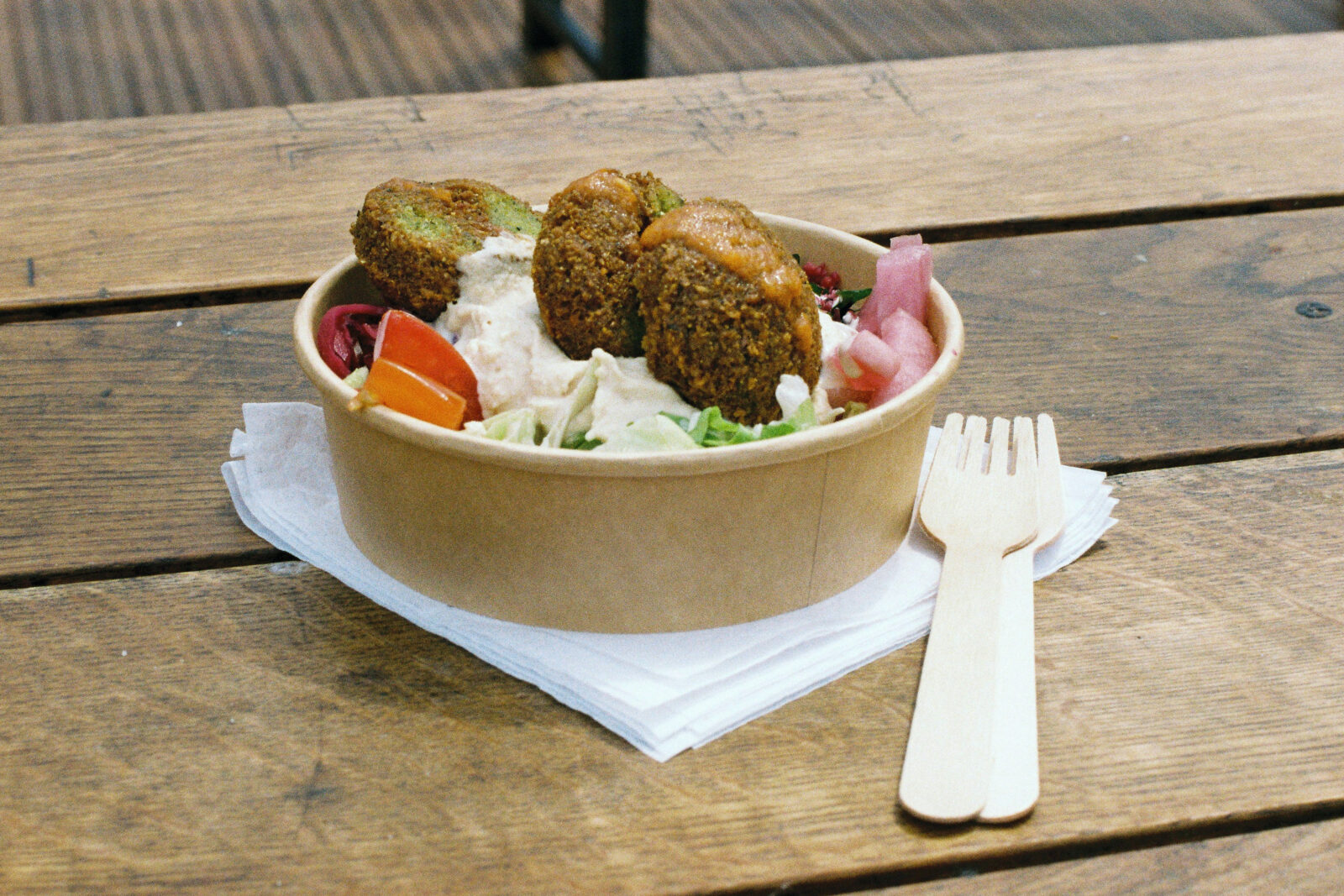Maya Glantz explores the rich world of Jewish cuisine, beyond just New York’s Ashkenazi dishes.
“You can’t beat a babka!” – cries Elaine, our sitcom golden girl, having just missed out on the bakery’s final chocolate babka. It’s one of Seinfeld’s many references to iconic Jewish foods, alongside the other heavy hitters: bagels, chicken soup, and pastrami sandwiches.
These dishes are all Ashkenazi in origin, brought to the states by Eastern European Jewish immigrants. They have since become integral to New York’s culinary identity – the delis, the bagel shops. It’s unsurprising, then, that these are the dishes that have come to define what ‘Jewish food’ means – relegating the rich culinary history of the Spanish-descent Sephardi, North African, and Middle Eastern Mizrahi Jewish communities into cultural obscurity.
With a Jewish population of only 15.7 million worldwide (0.2 per cent of the world population), shows like Seinfeld, whose finale racked up 76 million viewers, have shaped popular understanding of Judaism. Since its end in 1998, plenty of other New York-set, Jew-ish TV shows have stepped in to take its place, keeping lox and schmear firmly set in the public consciousness.
But it’s not all Curb Your Enthusiasm and The Goldbergs. Shows like Friday Night Dinner brought the Jewish experience into the British mainstream, with gentiles up and down the UK sing-songing “Shalom Jackie”. For many, these shows are their sole exposure to the religion – a revelation only made to me when a coworker said: “I’ve never actually met a Jew before, but I love The Marvellous Mrs. Maisel, so I feel like I get the culture.”
The issue with these depictions is not that they are inaccurate, but it’s that they are narrowly specific. Popular culture has created a monolithic representation of what it means, and looks like, to be Jewish – and it’s based almost solely on the Eastern European Ashkenazi tradition.

The latter half of the 19th century saw 2.5 million Eastern European Jews flee their homelands, many of whom relocated to the United States – bringing their culinary traditions and wry humour along with them. There, they set the foundation for “the culture” my co-worker referred to with such fond familiarity. But as Ashkenazi immigrants made their home in New York, by 1948, the majority of Mizrahi and Sephardi Jews were living in Israel. There, their culinary traditions evolved and adapted, influenced by surrounding cultures and the local produce.
For Jake Cohen, two-time NYT bestselling cookbook author, growing up in an Ashkenazi family in New York meant that Jewish food and Ashkenazi food were one and the same. His education around so-called ‘Jewish food’ didn’t extend far beyond this. He explains: “It was so integral to the fabric of New York culture. It’s lox and pastrami, matzah ball soup and brisket.”
It wasn’t until Cohen first went to Israel, aged 20, that he discovered an entirely new interpretation of ‘Jewish food’. Comforting, rustic, and often stodgy dishes were replaced with the bright spectrum of flavours of the Levant. Solid rye was swapped for fluffy pita, pastrami for golden, crisp falafel, steaming straight from the fryer, and mustard for amba – the spicy mango condiment favoured by the Mizrahim. Later, when Cohen met his husband and his husband’s Persian-Iraqi Jewish family, Cohen’s exploration into the possibilities of this cuisine was elevated further.
Broadening this Ashkenazi-centric perception of Judaism/Jewishness to encompass traditions across the diaspora became an obsession for Cohen. Sharing videos of his mother-in-law teaching him how to make tahdig, artfully flipping over a deep pan to reveal a mountainous pile of fluffy, saffron-stained rice with a deep, crispy exterior. Cohen introduced his one million Instagram followers to some of the stars of Sephardic cuisine.
In his cookbooks, and on social media, Cohen seamlessly interweaves dishes from communities across the Jewish diaspora. “The audience are understanding that it’s not a one dimensional cuisine, they’re looking to see the differences between Sephardi, Ashkenazi, and Mizrahi communities.” His recipes blend the Ashkenazi culinary traditions he grew up with with the flavours he’s learned from his husband, allowing him to create an inspired and distinctive interpretation of what ‘Jewish food’ looks like.
The fillings of the Iraqi-Jewish sandwich, sabich, are stuffed inside a bagel, potato latkes receive a Persian spin, and sumac makes a surprising guest appearance in his recent recipe for brownies. Cohen’s unique perspective exposes the breadth and complexity of the Jewish culture, introducing his audience to the religion beyond what they’ve seen on TV.
“The audience are understanding that it’s not a one dimensional cuisine, they’re looking to see the differences between Sephardi, Ashkenazi and Mizrahi communities”
Jake Cohen
Cohen’s experience bears a resemblance to that of British-Jewish food writer Josh Dell’s. Like Cohen, Dell grew up in an Ashkenazi family, knowing little of different communities across the Jewish diaspora beyond the one to which he belonged. His first exposure to food of the Mizrahi tradition was through his relationship with an Iranian Jewish woman. These new flavours marked a shift in Dell’s understanding of his own religion. “My mind was blown,” Dell says.
“I didn’t grow up in a very Jewish community and only began to explore religion in my twenties,” he explains. This access to an entirely different interpretation of Jewish traditions and food allowed Dell to develop an enriched understanding of the multi-faceted nature of the religion.
While there is a sizable Jewish community within London, the city has not adopted the culture in the same way as New York. Pockets of London, such as Golders Green, have been shaped by their Jewish communities, and this can be felt as you walk down the main roads, passing by kosher butchers and bagel bakeries. But these communities remain on the fringe – the influence not far-reaching enough to weave itself into the fabric of the city. As Dell notes, the Jewish influence in New York stretches beyond food. “Even in the way people speak, Yiddish is permeated through the various different communities there, here that’s just not the case.”
Jewish cuisine is built on a series of adaptations, dishes created by the necessity of displacement. The Jewish people did not abandon their culture when they were forced to leave their homes, they brought it along to their next home and combined it with what they discovered there – much like Cohen has done with his recipes.
“The only difference,” he adds, “is now we are doing it from a place of prosperity and joy, versus necessity and hardship.”
